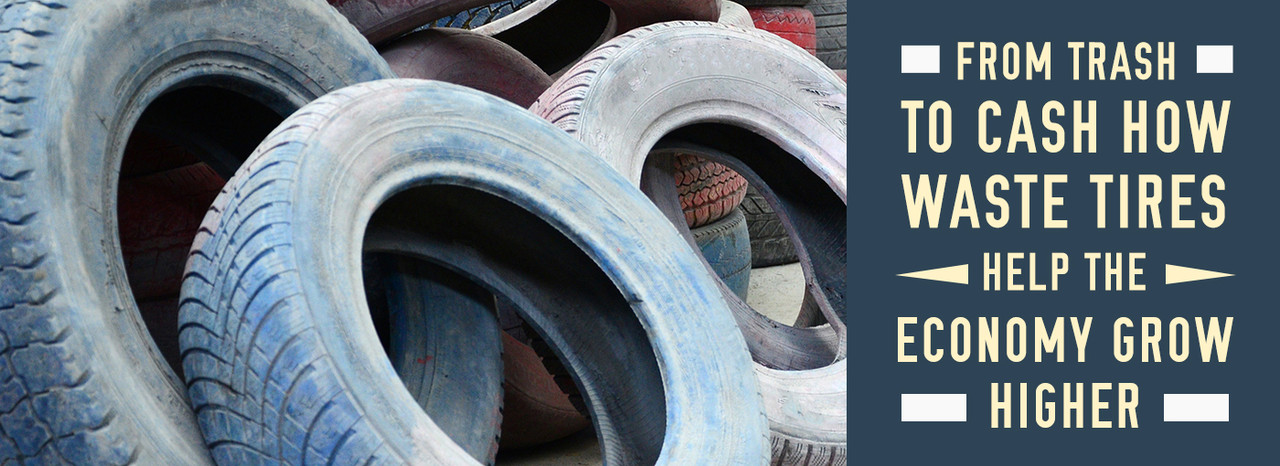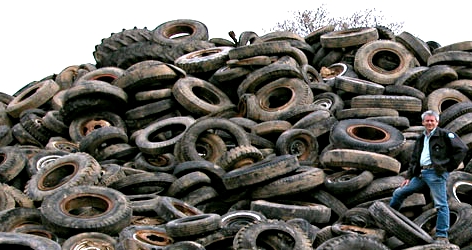Everyone who’s ever owned a car, bicycle, tricycle, moped, or unicycle has wrestled with the same question: is there any way to recycle these giant rubber discs?
We throw them out without thinking much of it? But have you ever thought to yourself what can old tires be used for?
We’ve written about recycling tires before, but it always seems like an awful waste to let these repositories of rubber, metal, and other composites simply go to a landfill. Especially since every year 450 million scrap tires are generated in the U.S. US alone according to the RMA.
The good news is that there are extremely efficient processes that turn waste tires to energy and other useful things like recycled materials which can be made into all manner of consumer and industrial products, as well as (drum roll please): usable fuel.
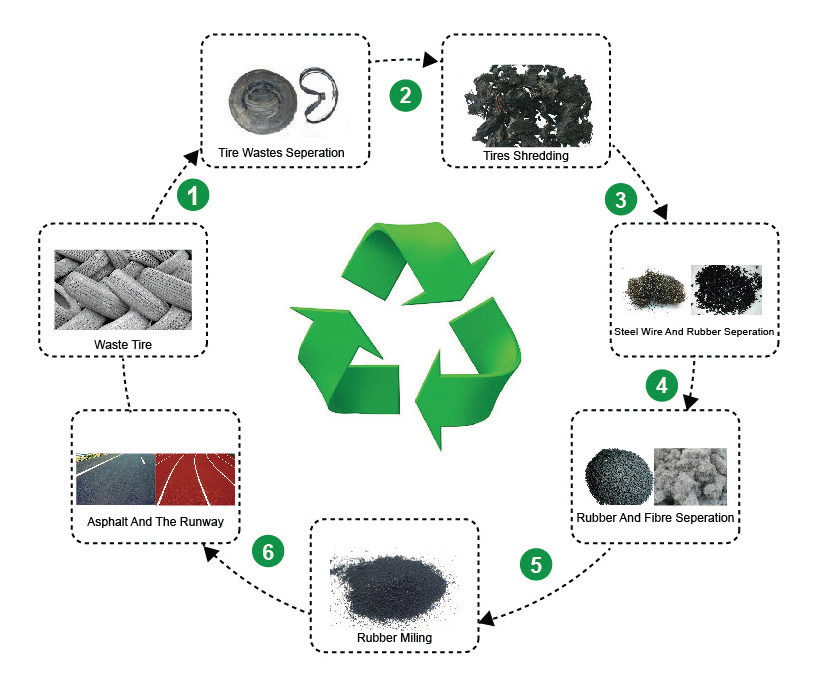
Source: Groundwork Recycling
Follow along as we take you through the process of tire reclamation and recycling, and learn how tire recycling makes the world a little cleaner.
Tire Waste: An Enormous Rubbery Problem
Source: Naturally Connected
As cool as tire recycling is, tires that end up in landfills or in other illegal dumping areas are an enormous problem. Many people have experienced the awful smell and reduction in air quality that a tire fire creates, and large supplies of tires that catch fire can often burn for months, and result in a pile of slaggy waste that doesn’t help anybody.
Tire fires are serious, they can start suddenly and last for months if not years! But now we can turn that those tires to energy without wasteful incinerators.
Additionally, tires provide the perfect nesting grounds for mosquitoes, rodents, and other pests, which can often result in significant health risks. Tires that have been thrown in landfills can often absorb methane gas, resulting in them bubbling to the surface of landfills and rupturing landfill liners, which can lead to some very nasty environmental consequences. Luckily, there are many recycling programs in place now, and the approximate 700 to 800 million illegally disposed tires have been reduced to around 275 million as of 2004.
How did we reduce waste so drastically?
With excellent processes and the scientific transformation of tires from waste to energy.
The Recycling Process
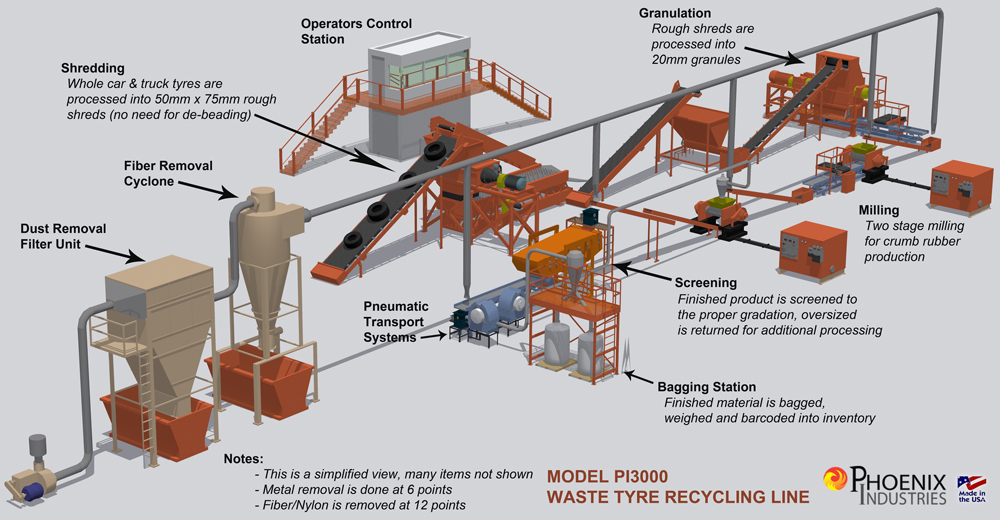
Source: Phoenix Industries
The tire recycling process involves a number of steps, which we’ll describe here in limited detail:
- Collection. Tires are collected a recycling plant, where a variety of process can take place.
- Wire Removal. Many tires contain steel wire that is designed to help the tire keep its shape and resilience. That steel can be removed and utilized for other purposes.
- Processing. Depending on the use and what type of recycling plant is doing the processing, the rubber is sliced or frozen with liquid nitrogen to create smaller pieces, and in some instances, a powder.
- Filtering and Screening. The rubber is filtered and screened to ensure homogeneity among the material.
- Cleaning. Finally, the rubber is cleaned and can go on to become fuel, or astroturf, or roads--all manner of applications.
But the final part and the really interesting conversion that takes place for rubber tires is called tire pyrolysis.
How Tire Pyrolysis Works:
 Source: Huayin Group
Source: Huayin Group
When recycled tires are burned in an oxygen-free environment, the process results in a vapor which can be utilized as a fuel or condensed into an oily substance which can often be utilized as a replacement for fossil fuels. The process is intensive, and requires state-of-art equipment and protocols to be done properly, but when this happens, the result is a fuel that burns cleaner than coal and can be used in a variety of applications.
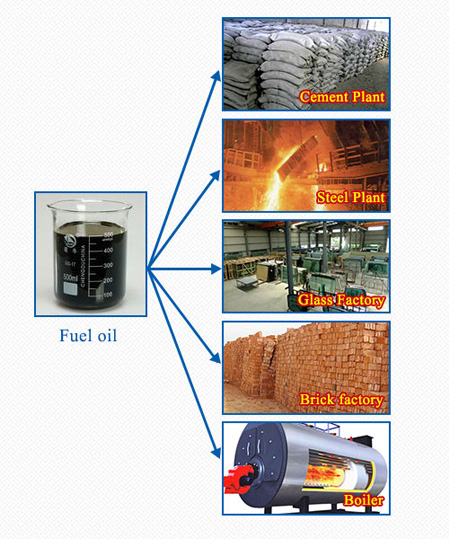
Source: Xinxiang Doing Renewable Energy Equipment Co., Ltd
Makes those old junky tires seem a lot more valuable now, doesn’t it?
Rolling Onward
If you’d like to start recycling your own tires, here’s a good guide to start. One of the easier things to do is locate a body shop or a tire shop that takes recycled tires and bring them over. That will get tires into the proper ecosystem for good disposal. And, if you’re a commercial operator, consider talking to us about methods for proper disposal of tire and other rubber waste--we have plenty of options industrial trash can options, and you can get in touch with us here.
Happy recycling!

